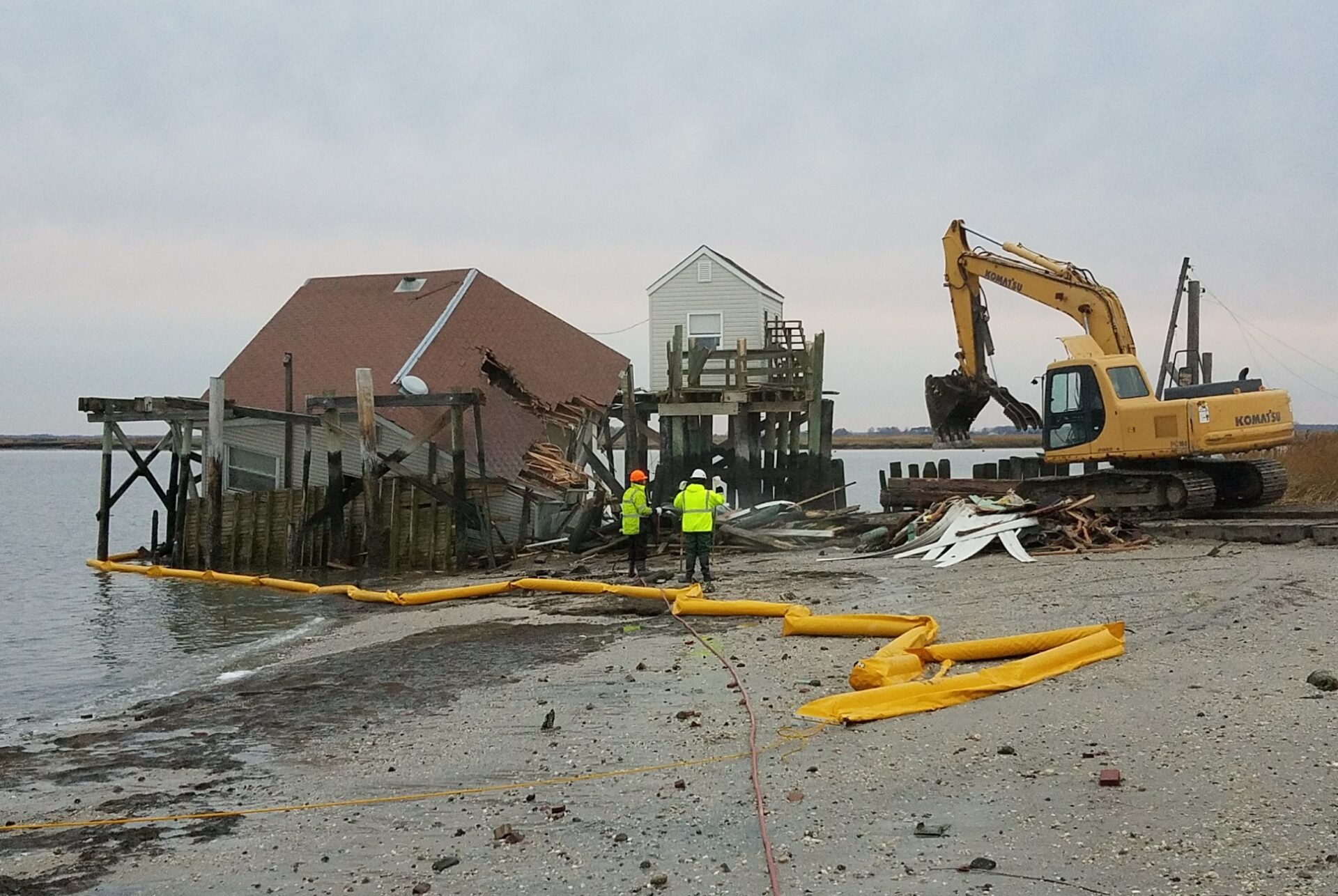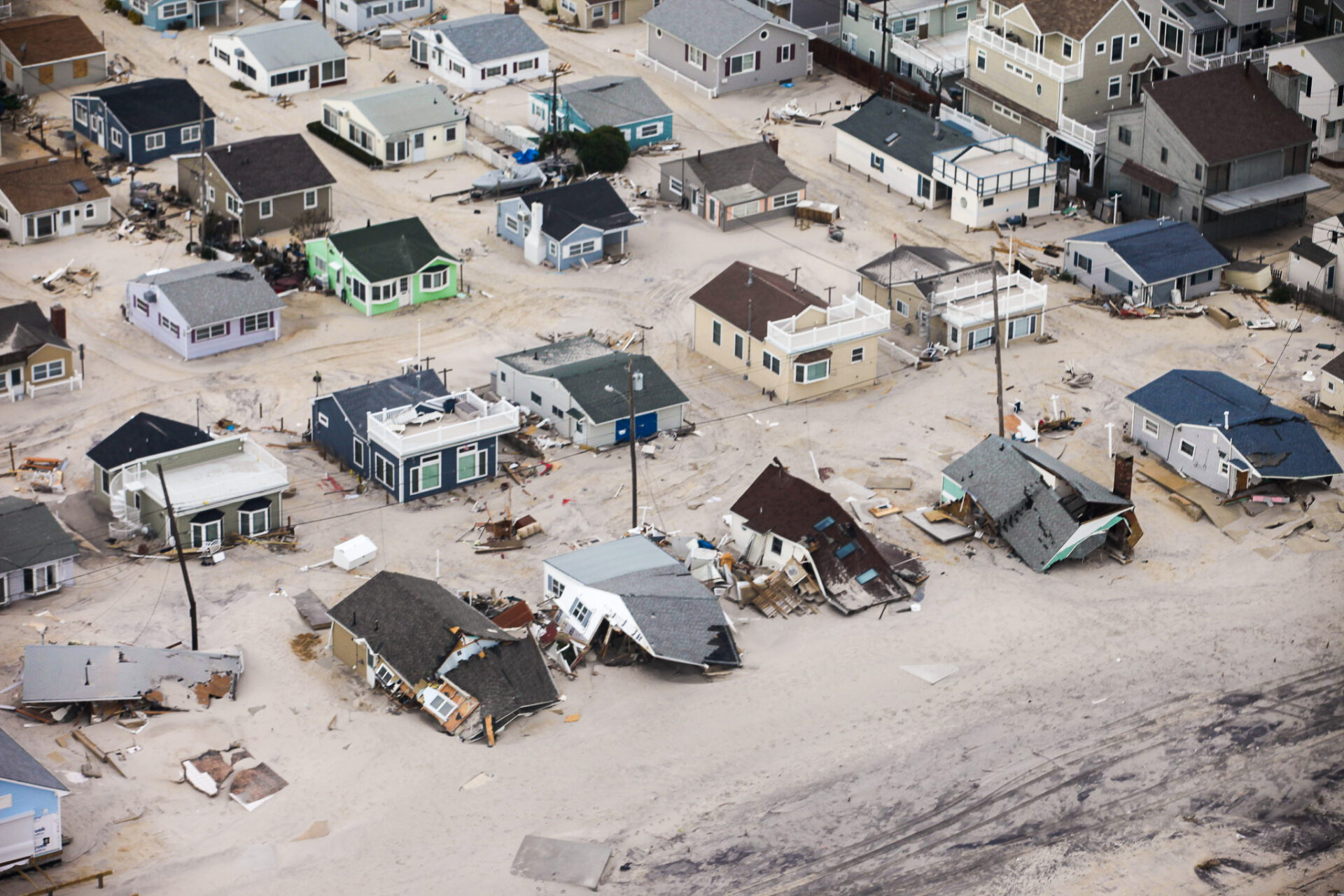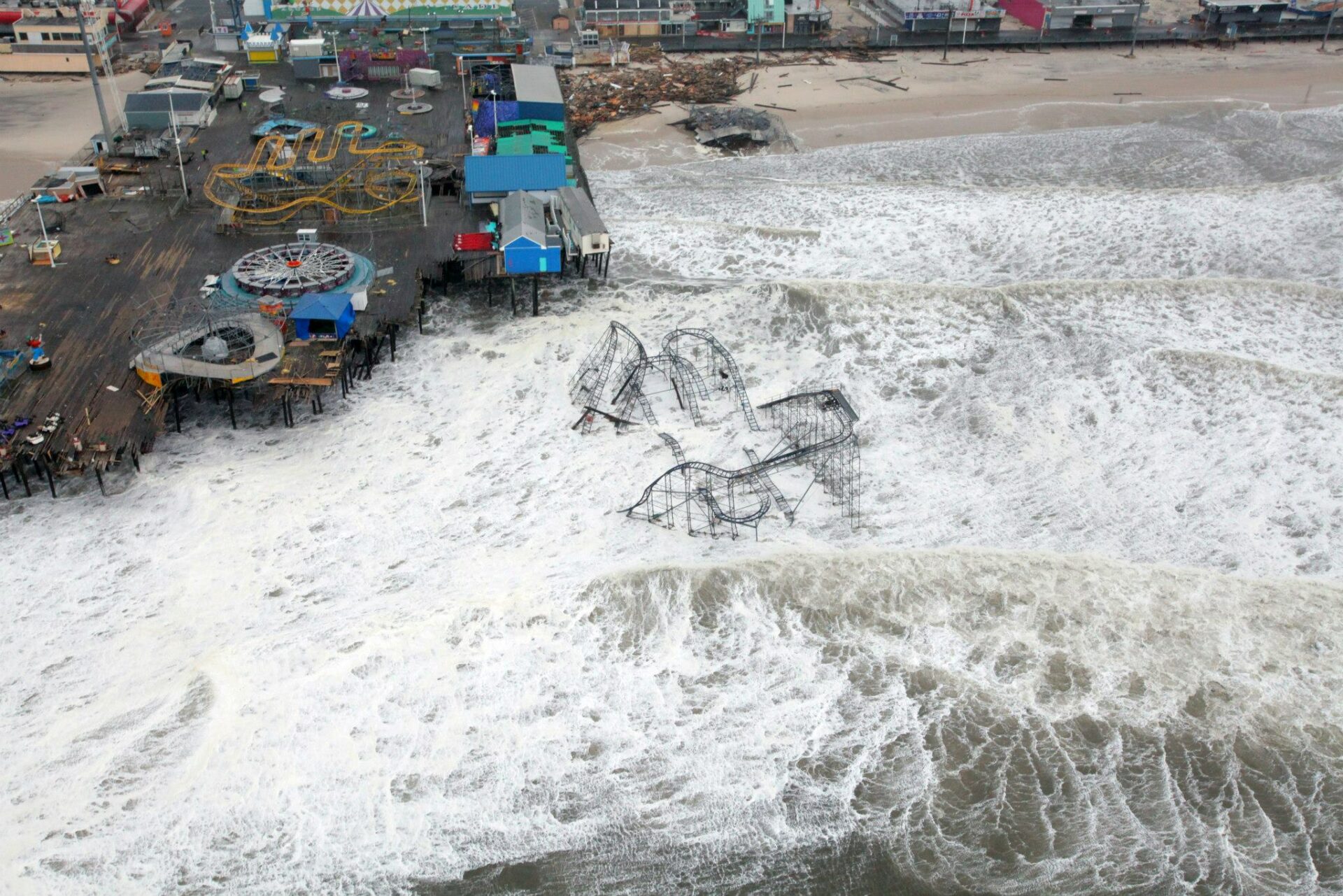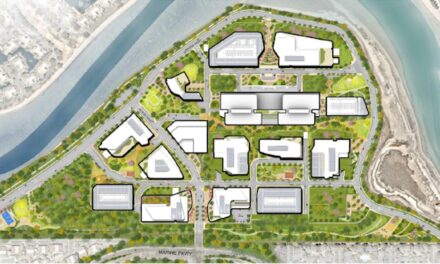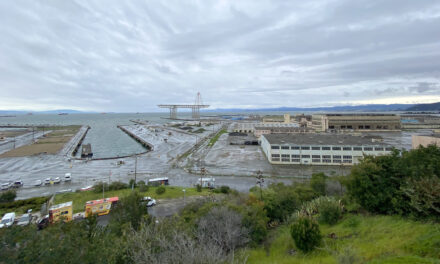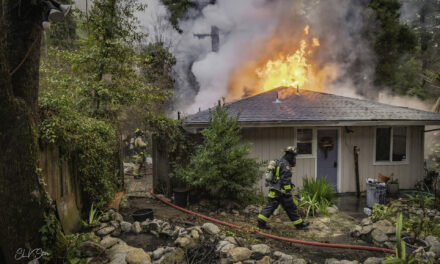“I don’t think this becomes real until the water is in the basement, or even worse, at the front door.”
The Jersey Shore is quiet in the winter. At least, it’s quieter than it is in the summer, when tourists from across the Northeast decamp to AirBnBs and bungalows to walk the boardwalk and swim in the waves. When it’s cold and the dunes are empty – except for the toughest of surfers in neoprene wetsuits – it becomes clear that New Jersey’s coastline is more than just an attraction, it’s an ecosystem.
That ecosystem is now being altered by climate change, particularly through rising sea levels and more intense storms. Scientists estimate that the sea could rise as much as eight feet on the Jersey shore by 2100.
The state has a suite of tactics to address those hazards, but one of the most innovative is a program called Blue Acres. The program, which Governor Phil Murphy recently announced he would be expanding to the tune of $50 million, buys homes in flood-prone areas and converts them to open space. This not only gets people out of harm’s way, but also creates a buffer to protect other residents from danger.
Blue Acres is just one example of what climate resiliency experts call “managed retreat,” efforts to move the population away from threats. It’s a controversial proposition for many people. But one of the upsides, says A.R. Siders, a professor at the University of Delaware’s Disaster Research Center, is that it’s permanent.
“Ideally it’s do this one time and then you’re done,” she says. “In certain areas it’s also that you can make space for things. You can make space for things like public access to coasts, you can make space for replenishing wetlands.”
Blue Acres is not the only buyout or managed retreat program in the U.S., but it is seen as unique for the fact that it has guaranteed state funding and is not tied to responding to one single disaster. Since the program was revamped in 2013, after Superstorm Sandy, it has bought more than 800 homes in flood-prone areas and demolished nearly 700 of them.
Flooding from Hurricane Sandy devastated oceanfront homes on the Jersey Shore. Photo: Greg Thompson/USFWS.
The program has traditionally bought out homes that have already been flooded. But Shawn LaTourette, commissioner of New Jersey’s Department of Environmental Protection, says he envisions a new, more proactive era of the program, so that it can play a larger role in building resiliency.
“This program materialized as a function of disaster recovery, disaster response,” he says. “Why should we wait for people to lose their property, their memories, or God forbid, their lives?”
It could take some work to build the program up. Some environmental advocates believe that the program is operating at only a fraction of what it could and should be. Though they note there’s probably no need to raze every shore town, some homes, especially those on the first row from the ocean, may have to be moved. However, the vast majority of Blue Acres buyouts have been near rivers or creeks, not the oceanfront property that’s in the most danger.
Some of the barriers to expansion are likely financial. Property buyouts can be incredibly expensive when the program is committed to paying a fair price on homes, even more so along the oceanfront. People who own pricey shoreline real estate may be uninterested in selling, even if they know the risks of storm surges and sea-level rise.
“We potentially need to put Blue Acres on steroids,” says Doug O’Malley, director of Environment New Jersey. “You’re going to have to be looking at magnitudes of ten of increased funding if you’re looking at buying the coastal real estate that’s most vulnerable. That’s the unfortunate reality of the program. It’s going to be very hard to convince oceanfront property owners to sell to the state even if it can match the real estate value.”
The program has strived to keep a partnership with local municipalities at its core, but sometimes it can also be difficult to get municipal buy-in. “It does create a bit of a political conundrum because once that property is purchased it is no longer on the tax rolls for a local government to derive property taxes, and that can have a negative effect on an overall community,” says LaTourette. “My personal opinion is that the program in its prior iterations has had a propensity to put a premium on that local partnership and sometimes the premium placed on that local partnership was a barrier to helping families in need.”
But the final barrier in getting the program where it needs to be to respond to sea-level rise could be one of the most challenging. The shore is both a vital part of New Jersey’s economy — generating nearly 50 percent of the state’s tourism dollars — and a place that many locals and visitors feel a strong connection to. The idea of “abandoning” it, even in small ways, can elicit strong reactions.
“People have really emotional attachments to the places they live,” says Siders. “In some cases it can even become part of one’s identity.” But, she says, sometimes trying to protect those communities by armoring in place can mean losing the things that made a place special in the first place. A seawall, she says, can potentially kill a beach or make it unattractive to beachgoers.
“We see places that are really concerned about the beach,” she says. “If you’re really concerned about the beach what you do is you move the houses preventing the beach from moving inland, doing what it would naturally do. You could remove that first row of homes, let the beach roll inland and you would still have a coastal tourism economy.”
LaTourette, when asked about people who worry about abandoning the shore, says, “the shore is going to abandon us, let’s be clear.”
“The future looks very, very different. We’re going to be okay, if we plan for it,” he adds.
Woodbridge lot returned to open space post Blue Acres demolition. Photo: NJ Dept. Environmental Protection.
California, too, has been interested in managed retreat and has dealt with some similar challenges. Though the California Coastal Commission asked cities and towns to consider and study managed retreat in the face of sea-level rise, this has not been a popular proposal for many. The city of Pacifica found that moving away from the vulnerable areas could impart a higher net benefit than other methods of dealing with the water, the San Francisco Chronicle reported, but the city government and residents rejected it as an option. The town of Del Mar, despite a seawall collapse and alarming high-tide projections, refused to even consider retreat.
Environmental advocates in New Jersey note that Blue Acres isn’t the only thing the shore needs. Taylor McFarland, chapter coordinator for NJ Sierra Club, says restoring dunes and wetlands can also help protect the shore. One thing advocates say should be halted is beach replenishment, where the state dumps sand back onto beaches to address erosion.
“We’re spending tens of millions of dollars a mile to pump sand on our beaches and that’s just a fool’s errand,” says John Weber, mid-Atlantic regional manager at the Surfrider Foundation, who lives in a town on the shore. “We’re spending public money, but what are we protecting? We’re essentially protecting wealthy people’s second homes for the most part.”
But whatever the mix of ingredients that will make up New Jersey’s resilience strategy, advocates and officials agree that doing nothing is not an option.
“I don’t think this becomes real until the water is in the basement, or even worse, at the front door,” says O’Malley. “Ask any sailor, the ocean always wins.”
MORE
- Retreat By Any Other Name (KneeDeep Times, 2022)
- California’s Radical Plan to Defend Homes From Sea Level Rise (SF Chronicle, 2022)
- Blue Acres (New Jersey Department of Environmental Protection)
- Sea Level Projections for New Jersey (Rutgers University, 2020)
- Governor Expands Blue Acres (State of New Jersey, 2022)






